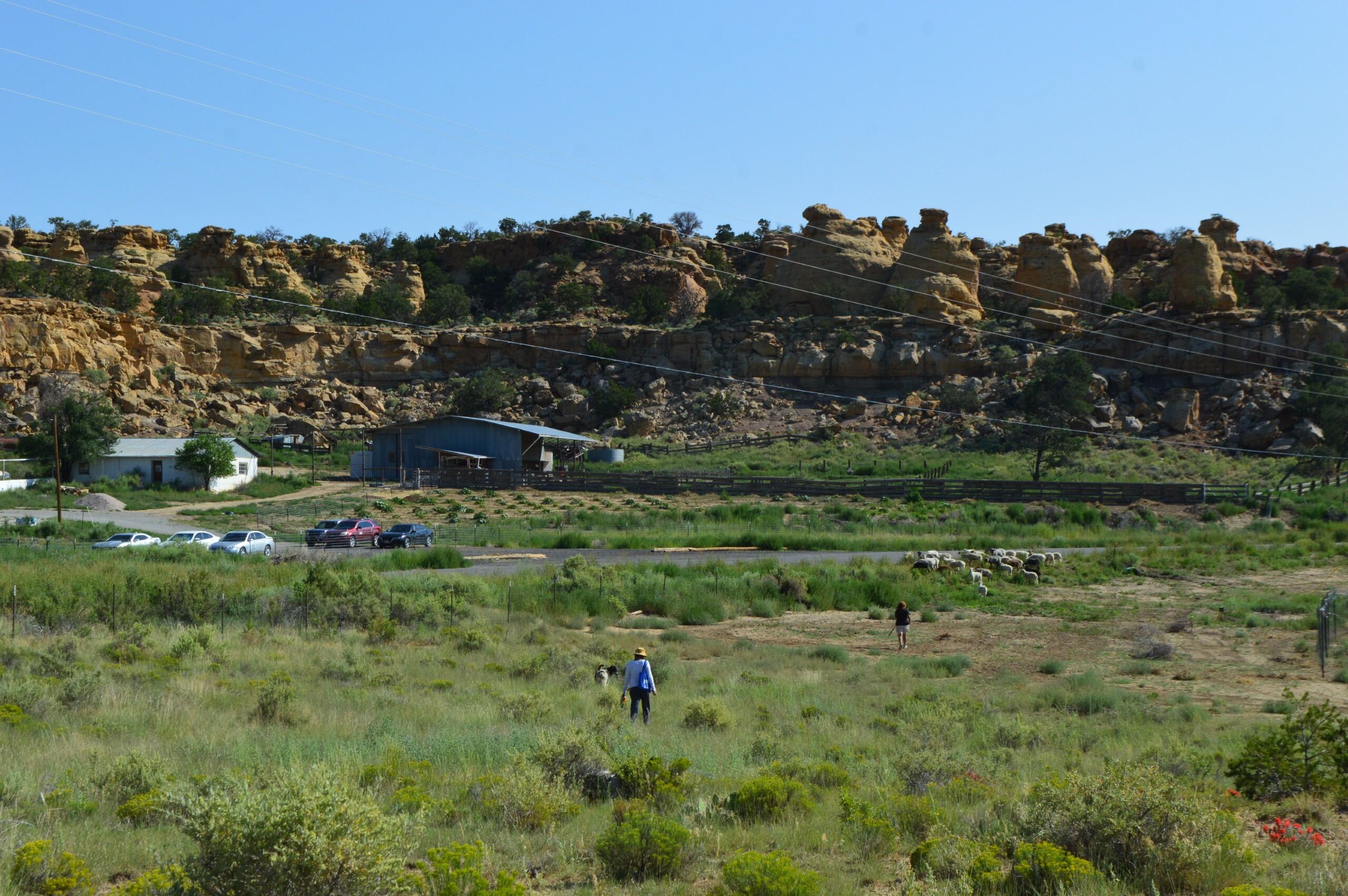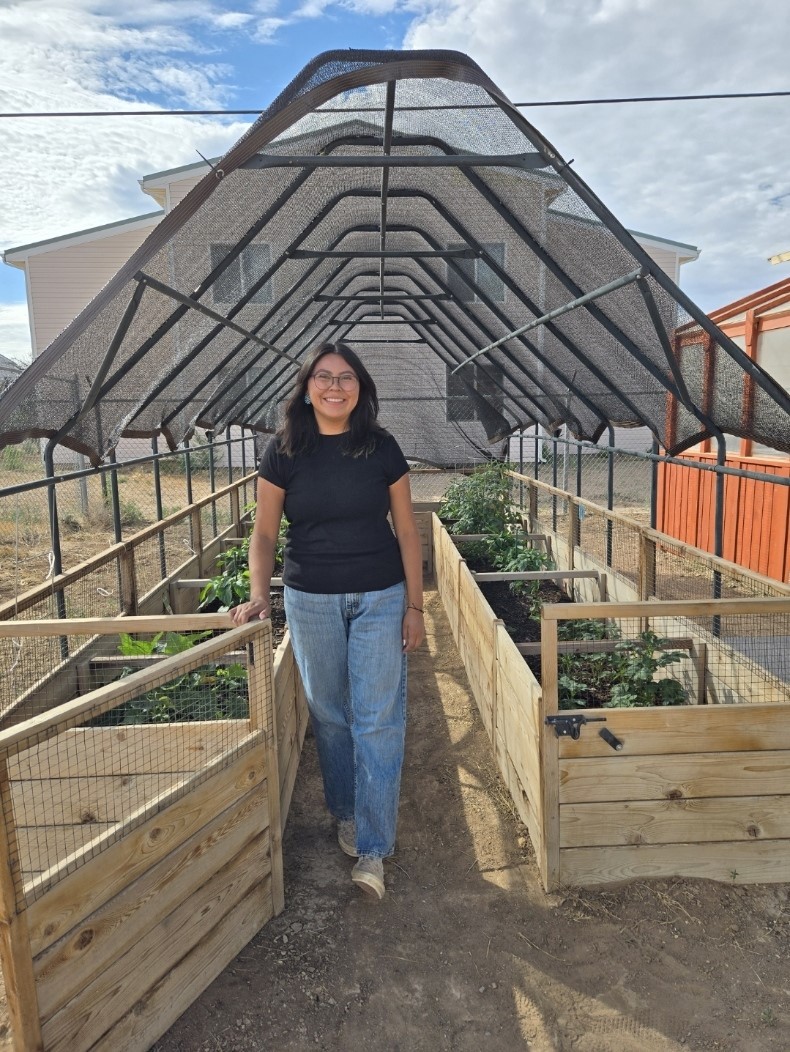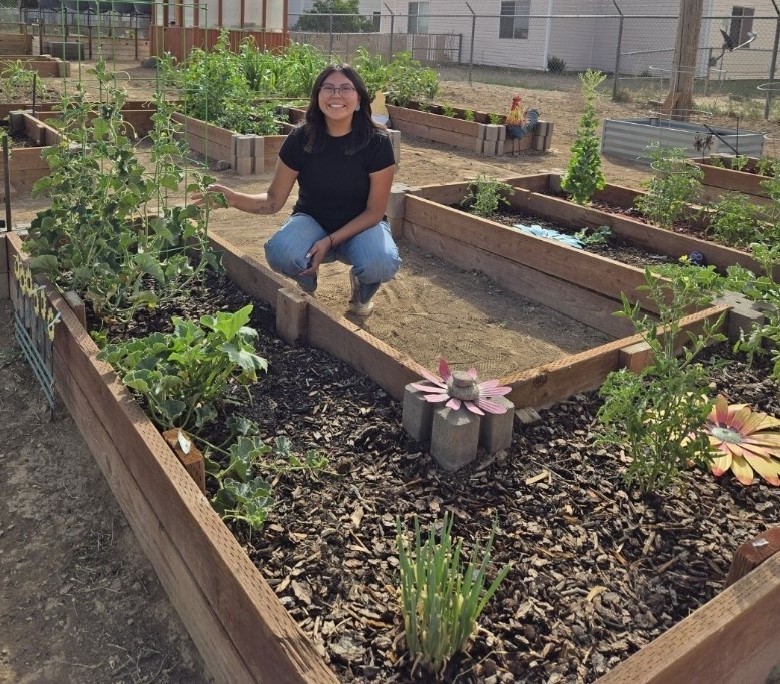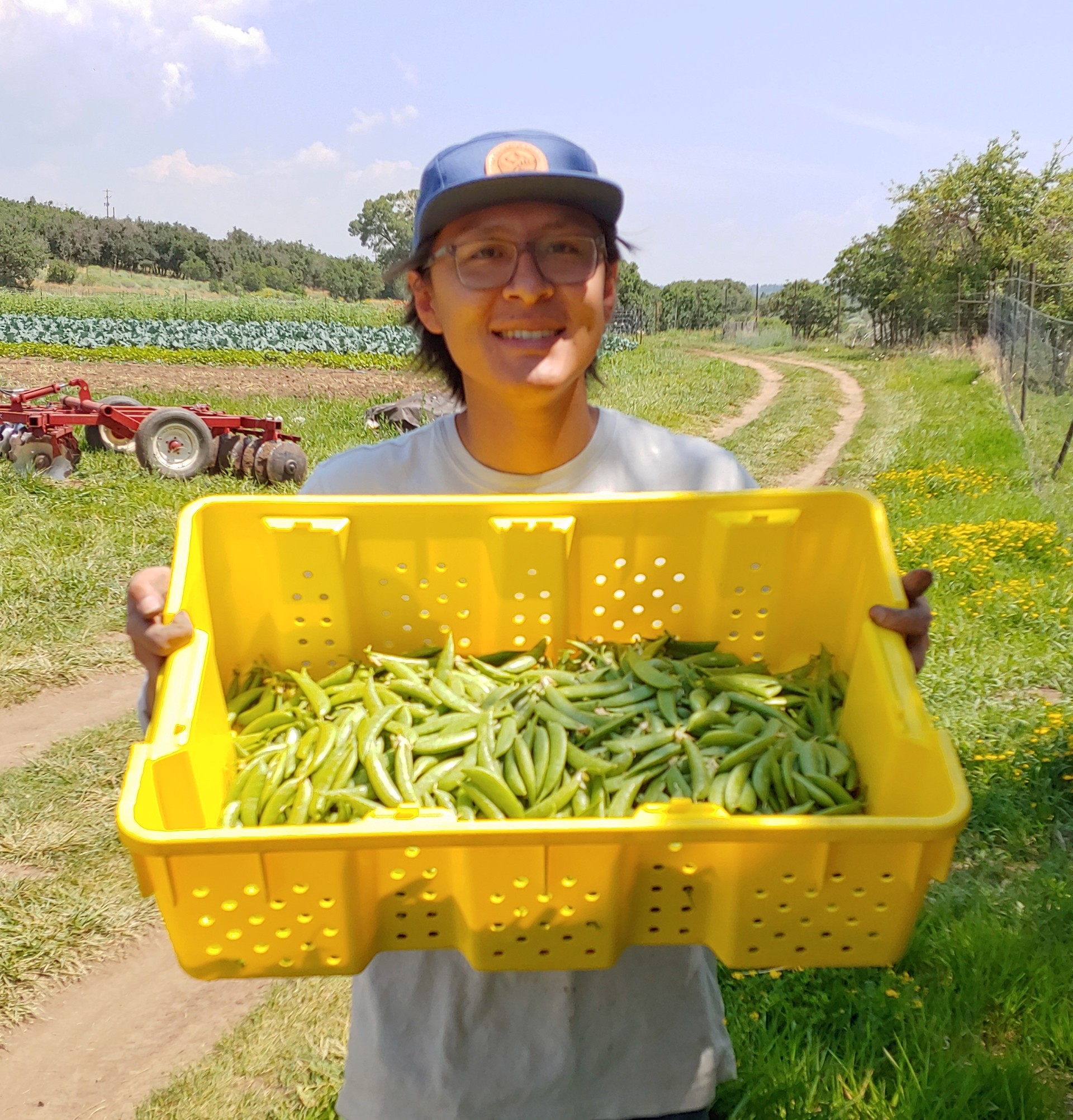The Southwest Climate Hub supported agricultural internships for Native American students as part of the Regenerative Food Systems Certificate at Fort Lewis College in Durango, CO. Selected students worked with an academic advisor on an agriculture-related internship.
Raynique Francisco worked at the Hozhó Voices of Healing Center in Borrego Pass, New Mexico on the Navajo Nation. Darion Fredericks worked at the Farmer In Training program at the Old Fort in Hesperus, Colorado. Collyn Johns, Diné (Navajo), worked at Chinle Planting Hope in Crownpoint, NM, on the Navajo Nation. Read more about the intern’s reflections on their experiences below.
Raynique Francisco, Diné (Navajo)
Major: Sociology and Human Services
Minor: Native American and Indigenous Studies
Raynique Francisco is a student at Fort Lewis College (Durango, CO) who completed a paid summer internship in the area of Indigenous Agriculture. She worked at the Hozhó Voices of Healing Center in Borrego Pass, New Mexico on the Navajo Nation. Her internship was funded through the USDA Southwest Climate Hub grant titled “Supporting Career Pathways to Indigenous Agriculture.” Below is her reflection on her experience.
During my time at the Hozhó Voices of Healing Center in Borrego Pass, New Mexico I was asked if I could sum up my experience part way through my time there. My words from then still capture how I feel after finishing my time at the Center. “I can't believe I get to have another summer where I feel like I'm playing and learning with my cousins even though we were complete strangers at one point.” I chose the word play because imagination and curiosity are in motion when children ‘play’. At the Center, imagination and curiosity were in motion to solve erosion, herd sheep, fence, trench, and form ké (family). And like children we learned through trial and error, through observation, and of course good-old Diné scolding. I chose to call my fellow interns cousins instead of Ké because growing up on Dinétah (Navajo Rez) you always have a group of cousins that are with you through thick and thin. The projects we had to accomplish at the Center, like docking and castrating sheep, working the fields, weeding, hauling water, feeding the animals, and seed saving, are activities a traditional Diné family would do. Even though the projects we accomplished were difficult and done in the peak of Southwest summer, our work was like playing outside. Our time together may just be a summer of work for some but for us young Diné women and men this is the way of Diné, this is how we make meaning of the world around us, this is how we make relationships, and this is how we keep our curiosity and imaginations. My experience is embodied in the sentence “I can't believe I get to have another summer where I feel like I'm playing and learning with my cousins even though we were complete strangers at one point.”

Collyn Johns, Diné (Navajo)
Major: Psychology
Regenerative Food Systems Certificate
Collyn Johns is a student at Fort Lewis College (Durango, CO) who completed a paid summer internship in the area of Indigenous Agriculture. She worked at Chinle Planting Hope in Crownpoint, NM, on the Navajo Nation. Her internship was funded through the USDA Southwest Climate Hub grant titled “Supporting Career Pathways to Indigenous Agriculture.” Below is her reflection on her experience.
When I first got to my internship spot, the back yard was where they had the garden. I went back there, and they had two plots that were raised beds. They had already planted, and they planted a variety of fruits and vegetables. The backyard was also very overgrown with weeds, they were everywhere, you barely had a path to walk. So I got to work on that as soon as I started. I got the weeds cleared up and that’s when the real work started. I wanted to expand the back yard with more plots of different fruits and vegetables, so I started that. We purchased a tiller and got to tilling the  hard ground, after that we water irrigated for about a week or two and then got to planting. We planted corn in one plot and the corn was Robin’s Egg. We did another plot a week later and this was also filled with Robin’s Egg and there was also Zucchini planted as well. After this we got some starter plants that were ready to be planted; this was a lot of tomatoes, about 10 tomato plants and different melons as well. After this, I was going back most days to water the plants and do some garden work on different days. We also noticed that the sun was so hot that the plants were starting to die, so we got some fencing and attached a thin mesh on top of it to prevent the burning.
hard ground, after that we water irrigated for about a week or two and then got to planting. We planted corn in one plot and the corn was Robin’s Egg. We did another plot a week later and this was also filled with Robin’s Egg and there was also Zucchini planted as well. After this we got some starter plants that were ready to be planted; this was a lot of tomatoes, about 10 tomato plants and different melons as well. After this, I was going back most days to water the plants and do some garden work on different days. We also noticed that the sun was so hot that the plants were starting to die, so we got some fencing and attached a thin mesh on top of it to prevent the burning.
We became known for our community garden. People started reaching out and started to donate various plants. We got some melons, vegetables, and flowers, and I planted them and expanded the community garden with about 5 plots and a little green house in the corner.
Darion Fredericks, Hopi
Major: Environmental Conservation and Management
Regenerative Food Systems Certificate
Darion Fredericks is a student at Fort Lewis College (Durango, CO) who completed a paid summer internship in the area of Indigenous Agriculture. He worked for the Farmer In Training program at the Old Fort in Hesperus, Colorado. His internship was funded through the USDA Southwest Climate Hub grant titled “Supporting Career Pathways to Indigenous Agriculture.” Below is his reflection on the experience.
A Growing Season at The Old Fort
This summer, I had the opportunity to participate in the Farmer In Training (FIT) Program through Fort Lewis College. The program offers a variety of training and education based around growing crops in the Southwest region. My cohort consisted of 17 others, which was the largest group of FITs in the program so far. It was exciting getting to know everyone as we all had different backgrounds with different goals related to our farming journeys. Most days began with farm work in the morning and afternoon lectures, complimented with weekly field trips to regional farms. The field trips were a highlight for me as they allowed us a peek inside the world of farming as a business, ranging from newer farms to those that have been in operation for some time. The field trips would conclude with a Q&A session with the owners allowing FITs to gain feedback about specific areas of their farming journeys and what their goals are for the future. One of our trips was to a farm called Pueblo Food & Seed Company in Cortez, CO, which focused on seed production and producing organic food products. Another visit was with Bidi Baby Foods out near Shiprock, NM, which is an Indigenous owned company and focuses on organic food products for young children. These two operations were particularly interesting to me as they are focused on addressing food insecurity and creating local access for food processing. My own farming goals are framed around how I can impact my local food production out on the Hopi reservation in Northeastern Arizona, as well as working on seed saving. Our lectures helped us consider and discuss the problems associated with modern agriculture and the disconnection with our food systems. These are problems that are affecting many Americans in more ways than one, however, we also learned that there is great work happening towards addressing these issues and creating more opportunities for the next generation of farmers. Another key takeaway from the program was that there is a network of farmers willing to share their knowledge and assist in any way they can, we must be willing to reach out, and that is what excites me to continue my farming journey and to expand my network to create lasting relationships across the country. I greatly enjoyed my time with the program and would absolutely recommend to anyone else that is interested.


